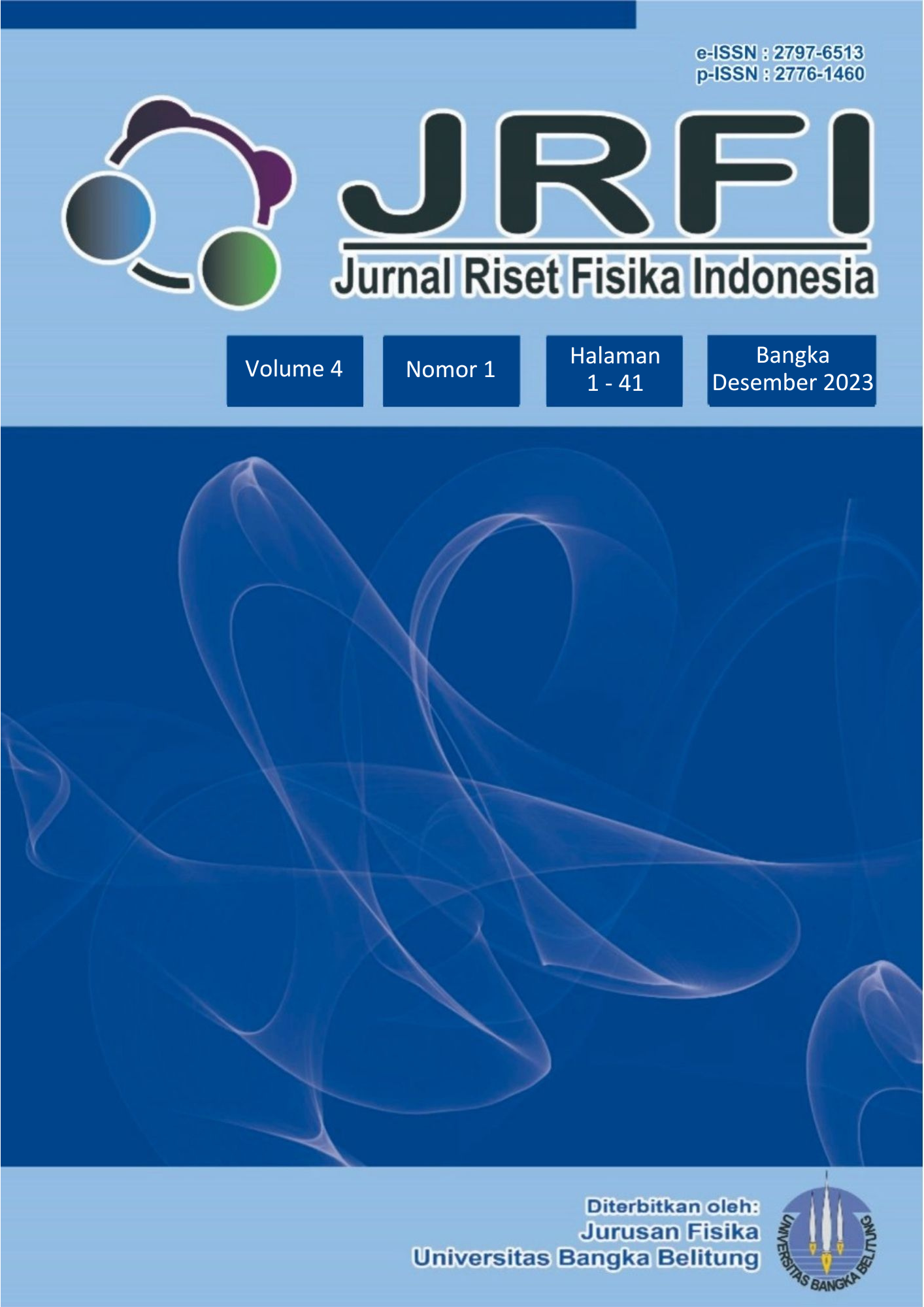Green Synthesis Nanopartikel Karbon Aktif dari Limbah Tempurung Kelapa
Abstract
Activated carbon from coconut shell waste is a porous solid that has a large surface area with high absorption capacity, making it an alternative for reducing levels of heavy metal ions in the air. Active carbon is made by carbonization and chemical activation, then SEM testing is carried out to see the morphology of the activated carbon and analyzed using ImageJ software. This research aims to determine the effect of chemical activation and no activation on the number of pores formed in activated carbon. From the results of research that has been carried out, there are more pores formed after carbon is activated compared to carbon without activation. This is because the carbon surface without activation is still covered by impurities. In addition, unactivated carbon and activated carbon from coconut shells have pore sizes that fall into the mesoporous category.
Downloads
References
N. Prabarini and D. Okayadnya, "Penyisihan Logam Besi (Fe) Pada Air Sumur Dengan Karbon Aktif Dari Tempurung Kemiri," Jurnal Ilmiah Teknik Lingkungan , vol. 5, pp. 33-41, 2013.
R. A. F. Lubis, H. I. Nasution and M. Zubir, "Production of Activated Carbon from Natural Sources for Water Purification," Indonesian Journal of Chemical, vol. 9, pp. 67-73, 2020.
E. Budi, H. Nasbey, S. Budi, E. Handoko, P. Suharmanto, R. Sinansari and Sunaryo, "Kajian Pembentukan Karbon Aktif Berbahan Arang Tempurung Kelapa," Seminar Nasional Fisika 2012, pp. 62-66, 2012.
F. E. Pujiono and T. A. Mulyati, "Potensi Karbon Aktif Dari Limbah Pertanian Sebagai Material Pengolahan Air Limbah," Jurnal Wiyata, vol. 1, pp. 37-45, 2017.
L. F. Ramadhani, I. M. Nurjannah, R. Yulistiani and E. A. Saputro, "Review: teknologi aktivasi fisika pada pembuatan karbon aktif dari limbah tempurung kelapa," Jurnal Teknik Kimia, vol. 26, pp. 42-53, 2020.
Verayana, M. Paputungan and H. Iyabu, "Pengaruh Aktivator HcL dan H3PO4 Tehadap Karakteristik (Morfologi Pori) Arang Aktif Tempurung Kelapa Serta Uji Adsorpsi pada Logam Timbal (Pb)," Jurnal Entropi , vol. 13, pp. 67-75, 2018.
N. H. Sulaiman, L. A. Malau, F. H. Lubis, N. B. Harahap, F. R. Manalu and A. Kembaren, "Pengolahan Tempurung Kemiri Sebagai Karbon Aktif Dengan Variasi Aktivator Asam Fosfat," Jurnal Einstein, pp. 1-6, 2017.
L. F. Ramadhani, I. M. N. R. Yulistiani and E. A. Saputro, "Review: teknologi aktivasi fisika pada pembuatan karbon aktif dari limbah tempurung kelapa," Jurnal Teknik Kimia , vol. 26, pp. 42-53, 2020.














